A TRIBUTE TO GENERAL JAMES M. HUTCHENS
First published in The Times of Israel – https://blogs.timesofisrael.com/chazak-jim-a-tribute-to-general-james-m-hutchens/
There are some people whose life is a novel, a movie, and it comes effortlessly and naturally because it is just the way they are.
Late General James M.Hutches, a beacon of light and assuredness, was just like that. If somebody would mention a semblance of my first phrase to Jim, he would laugh it off instantly, and he meant it. But in fact, so many episodes of his long life are worth a book of its own, with several of them written, that it is really hard to believe that all these episodes belong to the life of just one person.
Late Brig. General, the US Army James M. Hutchens. Courtesy ©: The Jerusalem Connection and The Rogatchi Foundation.
His incredible service in Vietnam where he fought so bravely, being rewarded two Bronze Stars and one Purple Heart for his exemplary service to his country and his countrymen. His tireless work in support of Israel which he did for decades, devoted, efficient, noble. His fight against terrorism both in Israel and in the USA.
Opening ceremony of Michael Rogatchi’s Year 1953 painting at the Laogai Museum, with General Jim Hutchens and Pat Hutchens in the centre. Washington D.C., February 2013. Courtesy ©: The Rogatchi Archive.
They all were deeds of the man with a great vision. Jim did know exactly what he is doing – or not doing , and where he gets involved – or not so, and why. The clarity of his vision was remarkable in the times of so many compromises of all sorts, and prevailing political correctness all around. And that clarity was reassuring in an honest, pure, curing way. The way many of us miss nowadays, increasingly so. The assuredness of Good Forces that emanated from Jim during his lifetime was magnetic. And healing.
It is what is expected largely from the servant of God which Jim was. But in his case, it was 101% true. No false, no pretension, no supposition, no suggestion. Reverend Hutchens was the man of organic goodness.
It took me some while to start to comprehend how to write about Jim in the past tense. He was always there – for us, for his friends, for his family, for Israel. He was limitlessly generous in providing his presence and availability to us all. He became the factor of stability of hope, light, supportive action, and assuredness.
I am writing a tribute to this remarkable man on his birthday, imagine. Jim would be 87 today. He passed away just five days before his 87th birthday, being weakened to the defining degree by the last 18 months of probably the most difficult period in his life. Due to the covid restrictions, he was confined within the four walls of the place where he lived this last period of his life. That confinement was heart-breaking for all who knew and loved the brave General.
* * *
Jim and his wife, artist Pat Hutchens who passed away in April 2014, were dear and close friends of my husband Michael’s and myself. Very dear and very close friends. A family, in many senses of the word. We were blessed with this family-like friendship for over twenty years.
Inna and Michael Rogatchis with Pat and Jim Hutchens at the concert of Felix Menhelshon’s Elijah at the Kennedy Centre. February 2021. Courtesy ©: The Rogatchi Archive.
It was during one of my frequent visits to Washington D.C. while advising some senior MEPs and participating in the work of the key foreign policy bodies of the European Parliament that I was speaking at an important US forum on the Middle East policies as an invited guest speaker when I have noticed a special figure and special face in the audience. In that fully packed audience that face and the reactions of that man on what I was saying were distinct in the most positive way.
He came to talk with me after my speech, and we have become instant friends. Next morning, Jim and I continued to talk over breakfast at my hotel , and during that talk I had to reschedule the rest of the day of my tightly planned program full of meetings, because both Jim and I just absolutely needed to talk more, and more, and more. It was a gift of friendship from the first sight.
Immediately after that rewarding encounter, Jim’s wife Pat, well-known artist and theologist ( as Jim himself) and my husband artist Michael joined our family-like unit, and from that moment over twenty years ago, it was a celebration of trust, compassion, solidarity, understanding, sharing, and support.
It was the family of the real American hero who was passionate about Israel where they did live for several years in the 1970s, and who did everything in their power to make this passion constructive. This was a truly rare attitude against so many challenges on their way, always. But not for once, their belief was not flinching for an inch. Israel and Jewish people have had staunch, selfless and very noble supporters as long as Pat and Jim Hutchens were living in this world.
Both Jim and Pat have decided to convert to Judaism at a certain stage of their lives, and till her end, Pat always signed her messages to us as Yael, her Jewish name, and Jim as Yaakov. He had a good command of Hebrew, as well. That essential change in their both’ lives turned to be dramatic and complicated, by the serious fault and ungraceful misunderstanding of the others, without a slightest sign of their both’ fault. What was amazing for Michael and myself always, was a total absence of bitterness in Jim and Pat after that incredibly traumatic experience. And their unwavering, encompassing love of Israel and Jewish people.
The one of the most stunning human deeds in support of Israel was Jim’s personal undertake of buying the remnants of the bus exploded by the terrorists in Tel-Aviv – and organising the shipping of the remnants of that bus all the way to Washington DC, installing this screaming evidence of the anti-Israel terror in the front of the Capitol, conducting many extraordinary rallies and events next to the bus there, thus really influencing and essentially helping the acceptance of several resolutions of the US Congress and Senate essential for the Israel’s struggle against terror on its soil.
Being an undisputed hero of the United States, being justly respected widely and highly, the former Deputy Chaplain of the US Army Brig. General James M. Hutchens spent a colossal amount of his time in his tireless practical everyday hard work supporting Israel. Myriads of the Israeli officials who were tasked with various important and often quite uneasy tasks knew that they could rely fully on General Hutchens who acted in quite unusual way.
When help was needed, Jim was not relying on a casual and sporadic telephone call. He was personally coming with the persons who needed support to all and every office at the Capitol Hill to make sure that the people from Israel would be heard, understood, and assisted. There was no better and more reliable man in the huge DC pool of senior influencers for Israelis than General Hutchens – who never failed to support Israel in anything he was addressed on, from the required political support to the serious, high-up and discreet resolving of truly tricky problems, as the one with the anti-Israeli flotillas.
He never, ever did it for a penny. I know about it in detail. He did it out of love, and his principles. That love was rooted deeply in both Jim and his wife, artist Pat who was the person who undertook a very demanding personal journey back to the Holocaust realities creating her famous by now Auschwizt Album Re-Visited series.
I was privileged to witness the process as it was evolving, worked on this project of her life with Pat, and wrote about it, with huge gratitude.
We were seeing each other regularly and often, not only in the States. When Jim and Pat were coming to Poland, with the Auschwitz Album Re-Visited exhibition which was the first show of those so very special images outside the US, and more, at the close proximity to the place of the actual actions depicted in the original monstrous Auschwitz Album put into the human and moral questioning context by brave Pat Hutchens, I flew over to Krakow specifically to be there with both of them during that uneasy and challenging experience.
Inna Rogatchi with Pat and Jim Hutchens at the Auschwitz Album Re-Visited first European exhibition, Krakow, Poland, 2012. Courtesy: © The Rogatchi Archive.
Later on, I curated and organised several of the exhibitions of those incredibly important artworks in various European countries.
The generosity of both Jim and Pat Hutchens was legendary. Seeing them in so many various circumstances, at their home and while travelling, at the special events and during a casual walks, in the morning and in the evening, with telephone ringing often in their truly hospitable and open, inviting home, I was often thinking that those are the people who were born to help to others. But I knew that what has become such a natural way of life for both Jim and Pat, was rooted in their deepest conviction, crystal-clear understanding of right and wrong, and stern principles. Plus – two golden hearts which were as one, due to their fantastic love, respect and admiration for each other. They both have become true guardians of many. So many people love them, and always will.
* * *
There is no wonder that when The Rogatchi Foundation decided to introduce a Life Achievement Family Award to the range of our annual Humanist of the Year Awards, our Board and the International Advisory Board unanimously voted for Jim and Pat ( posthumously) Hutchens as the recipients of it. The wonder was the timing.
As it happened, a warm and enlightening ceremony of the Award in Virginia in early March 2020 was the very last public event attended by General James M. Hutchens in his long, heroic, fantastic, exemplary, rare life. All three of Jim and Pat’s children were there, along with many friends and colleagues. It was also the very last time when Jim was among the people, not by himself.
I flew to the US specifically for that occasion, without knowing that it would be the last time that I will be seeing Jim in person, but with absolute clear inner understanding that the ceremony must be done now. At the moment, I had no clue of the reasoning behind that strong push inside myself to accomplish the ceremony of awarding Jim as soon as possible. Now I know. When I was leaving the Ronald Reigan airport, flying back from Washington DC, I was flying from an already completely empty space. When I landed home, the era of covid pandemic had started.
Our mutual friend who was very kindly and devotedly visiting Jim all the time during his covid-caused confinement whenever it was possible, was seeing our brave general a week before his passing in his sleep. The general was weak, life was leaving him slowly but steadily. He was in and out of conscience, dreaming and waking in turns. Amy, our friend, was sitting next to Jim at the moment when he was in between that all the time prolonging dream and consciousness. Jim was saying something, Amy understood. That something was ‘Yahweh’.
I was both surprised and not. Because, for many years now, I remember the episode in which Jim played a very special role. The one of the towering figures of American Jewry, the person who contributed enormously much into the active support of Israel during all his life, was battling the vicious cancer for a few years. At a certain point, he was close to losing the battle. Jim, who was a good friend and colleague of that man, was visiting him in hospital regularly and often.
Once, the man had asked Jim, the Reverend, to promise him something. “Please, stay with me during that moment, Jim. Nobody else, but you. Promise me that it will be you”. For three last hours in that great Jewish man’s life Jim Hutchens was the person who held the hand of the dying Jewish fighter reciting all proper Jewish prayers with and for him. ‘Chazak, my friend, chazak”, – Jim was saying to his passing friend. “Chazak” – was the last word, with the smile, of the man whose purpose in life was the safety of Israel and legacy of Ze’ev Zhabotinsky.
* * * *
When one’s parents are leaving this world, it is part of us leaving. When one’s siblings are leaving, it is the same. When one’s relatives are leaving, our world cracks and crumbles. When one’s friends are leaving, our own personal world gets holes in it, the holes which are unrepairable. And then, there are the people, the giants of men, who were protecting you, supporting you, helping you, listening to you, understanding you, comforting you, all this without any pomposity, humbly, modestly, organically, cordially, with needed pitches of humour, always, and that good laughs together. People who understood you without words, and whose unassuming but steady love and unquestionable loyalty was your blessing and protection, your shield. When such people who are extremely rare in one’s life are leaving this world, after a paralysis of an instinctive non-belief in what has happened, you start to understand what it means to be orphaned.
It is not only Michael and I who lost a dear friend. It is Israel which has lost a great and loving supporter, Yaakov ben Abraham, with the passing of real American hero General James M. Hutchens. We hope that his memory will be long and fruitfully lasting.
July 18, 2021
© Inna Rogatchi


 Michael Rogatchi (C). Strength of Love. Oil on canvas. 120 x 100 cm. 2016. Zion Waltz series.
Michael Rogatchi (C). Strength of Love. Oil on canvas. 120 x 100 cm. 2016. Zion Waltz series. Michael Rogatchi (C). Under the Jerusalem Skies. Oil on canvas. 110 x 90 cm. 2016. Zion Waltz series.
Michael Rogatchi (C). Under the Jerusalem Skies. Oil on canvas. 110 x 90 cm. 2016. Zion Waltz series. Inna Rogatchi (C). Gog & Magog I. Hidden Windows series. Watercolour, oil pastel, wax pastel, lapice pastel, crayons Luminance on authored original archival print on cotton paper. 50 x 70 cm. 2020.
Inna Rogatchi (C). Gog & Magog I. Hidden Windows series. Watercolour, oil pastel, wax pastel, lapice pastel, crayons Luminance on authored original archival print on cotton paper. 50 x 70 cm. 2020. Inna Rogatchi (C). Shavuot Window I. Watercolour, oil pastel, wax pastel, lapice pastel, crayons Luminance on authored original archival print on cotton paper. 40 x 50 cm. 2020.
Inna Rogatchi (C). Shavuot Window I. Watercolour, oil pastel, wax pastel, lapice pastel, crayons Luminance on authored original archival print on cotton paper. 40 x 50 cm. 2020. Michael Rogatchi (C). Shema, Israel!… Oil on canvas. 76 x 66 cm. 2003. Daily Miracles series.
Michael Rogatchi (C). Shema, Israel!… Oil on canvas. 76 x 66 cm. 2003. Daily Miracles series.
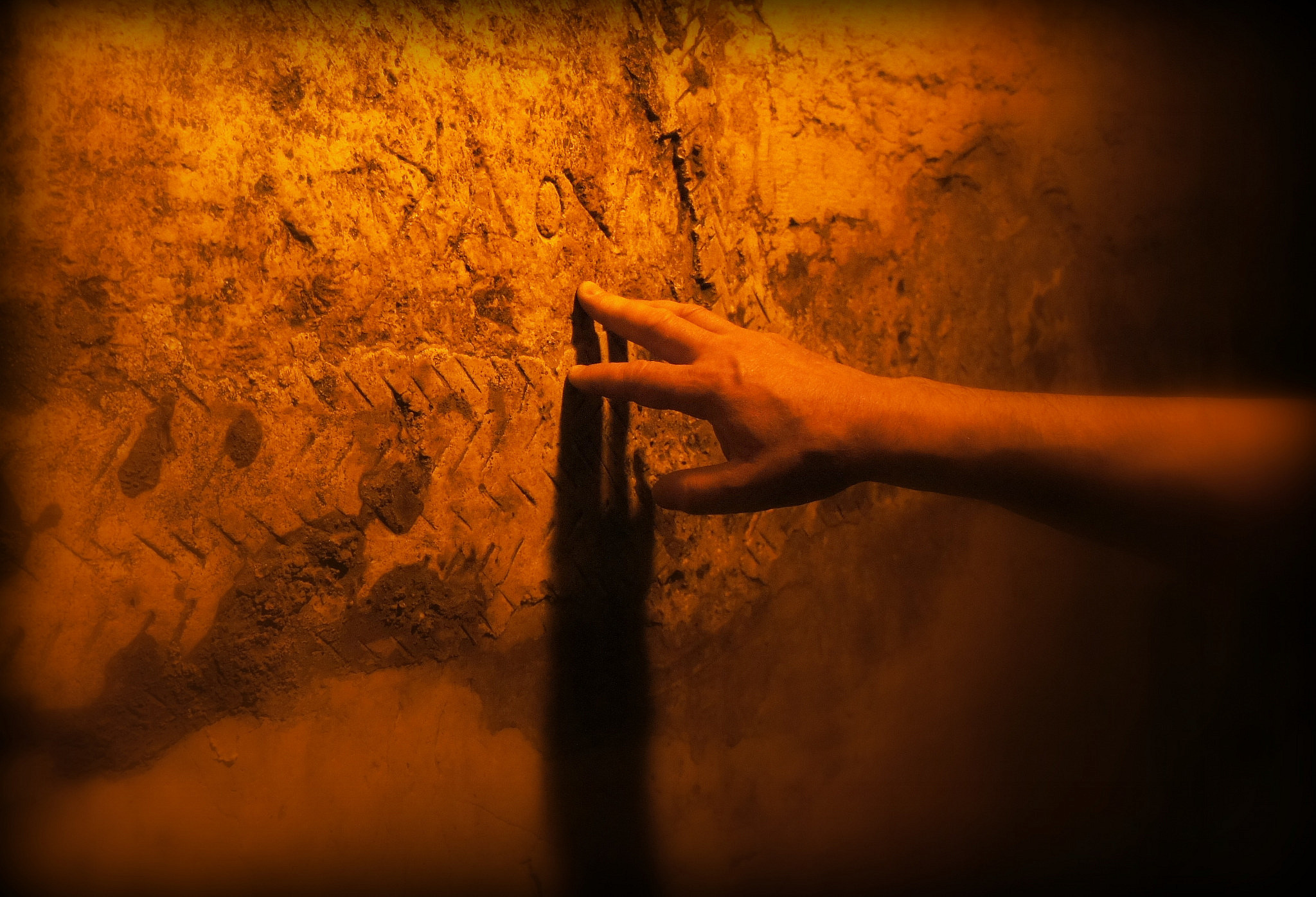 Inna Rogatchi (C). The Thread of Jerusalem. Fine art photography. Limited Edition. 2015.
Inna Rogatchi (C). The Thread of Jerusalem. Fine art photography. Limited Edition. 2015.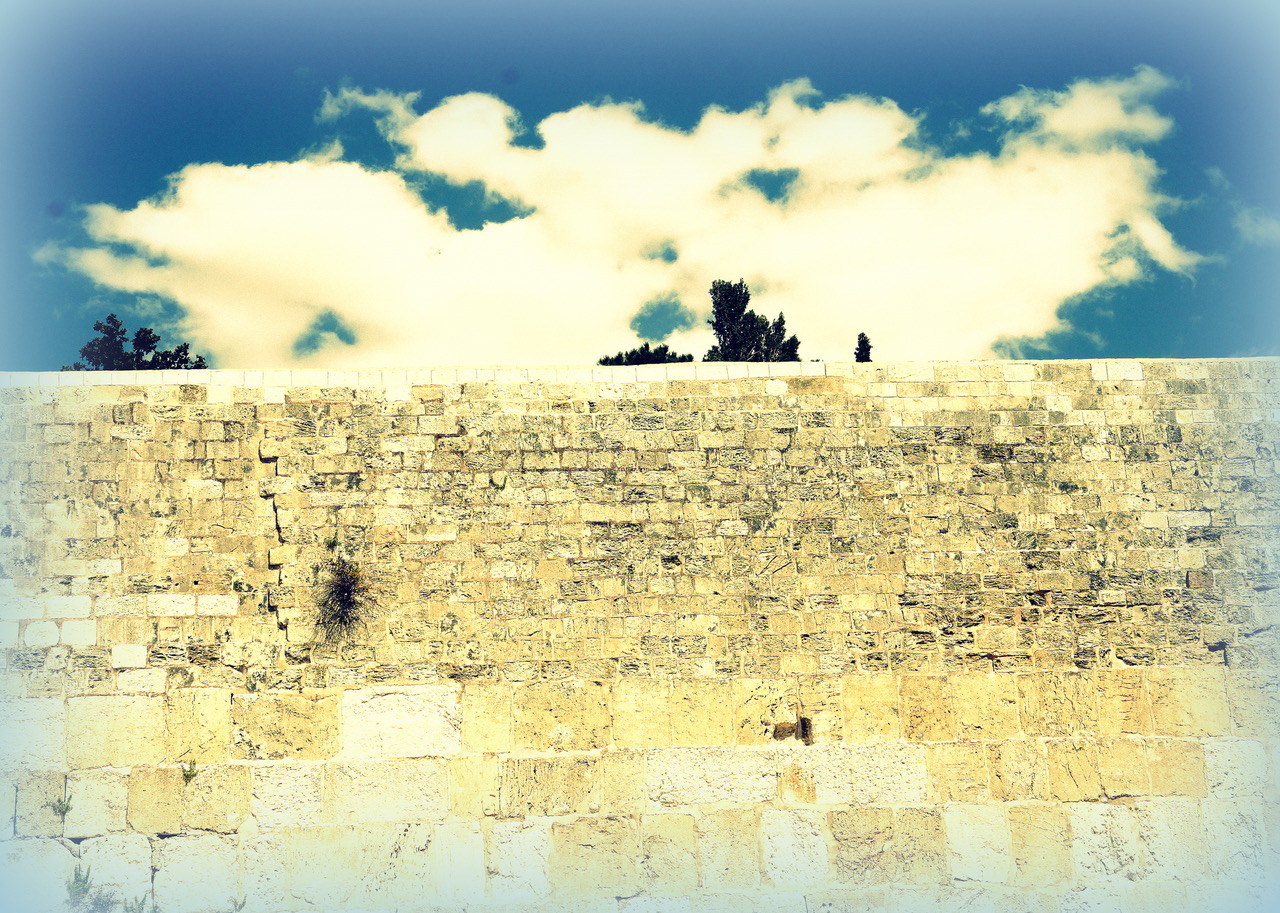 Inna Rogatchi (C). The cloud of Glory. Watercolour, wax pastel, oil pastel, lapice pastel, perle le blanc on authored original archival print on cotton paper. 50 x 70 cm. 2013-2020.
Inna Rogatchi (C). The cloud of Glory. Watercolour, wax pastel, oil pastel, lapice pastel, perle le blanc on authored original archival print on cotton paper. 50 x 70 cm. 2013-2020.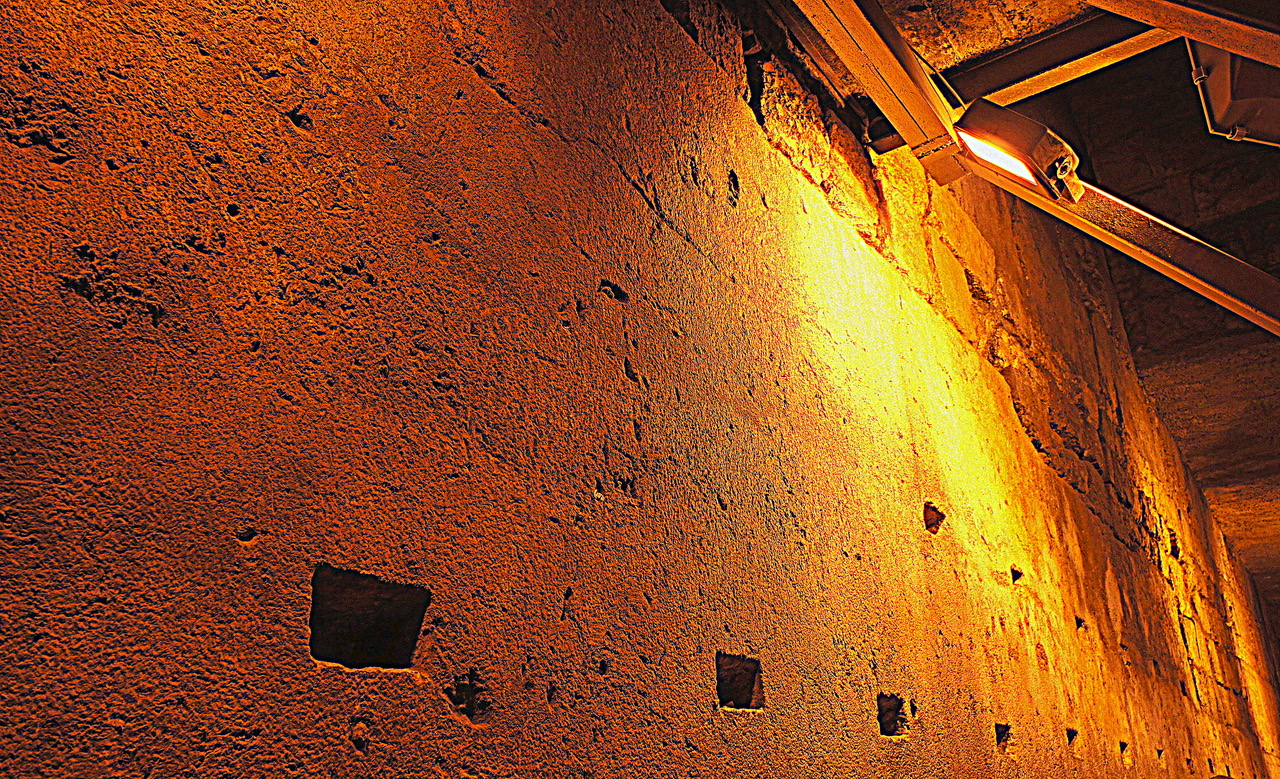 Inna Rogatchi (C). Giant of the Wall. The Temple Tunnel. Watercolour, wax pastel, oil pastel, lapice pastel, perle d’or on authored original archival print on cotton paper. 50 x 70 cm. 2014-2020.
Inna Rogatchi (C). Giant of the Wall. The Temple Tunnel. Watercolour, wax pastel, oil pastel, lapice pastel, perle d’or on authored original archival print on cotton paper. 50 x 70 cm. 2014-2020.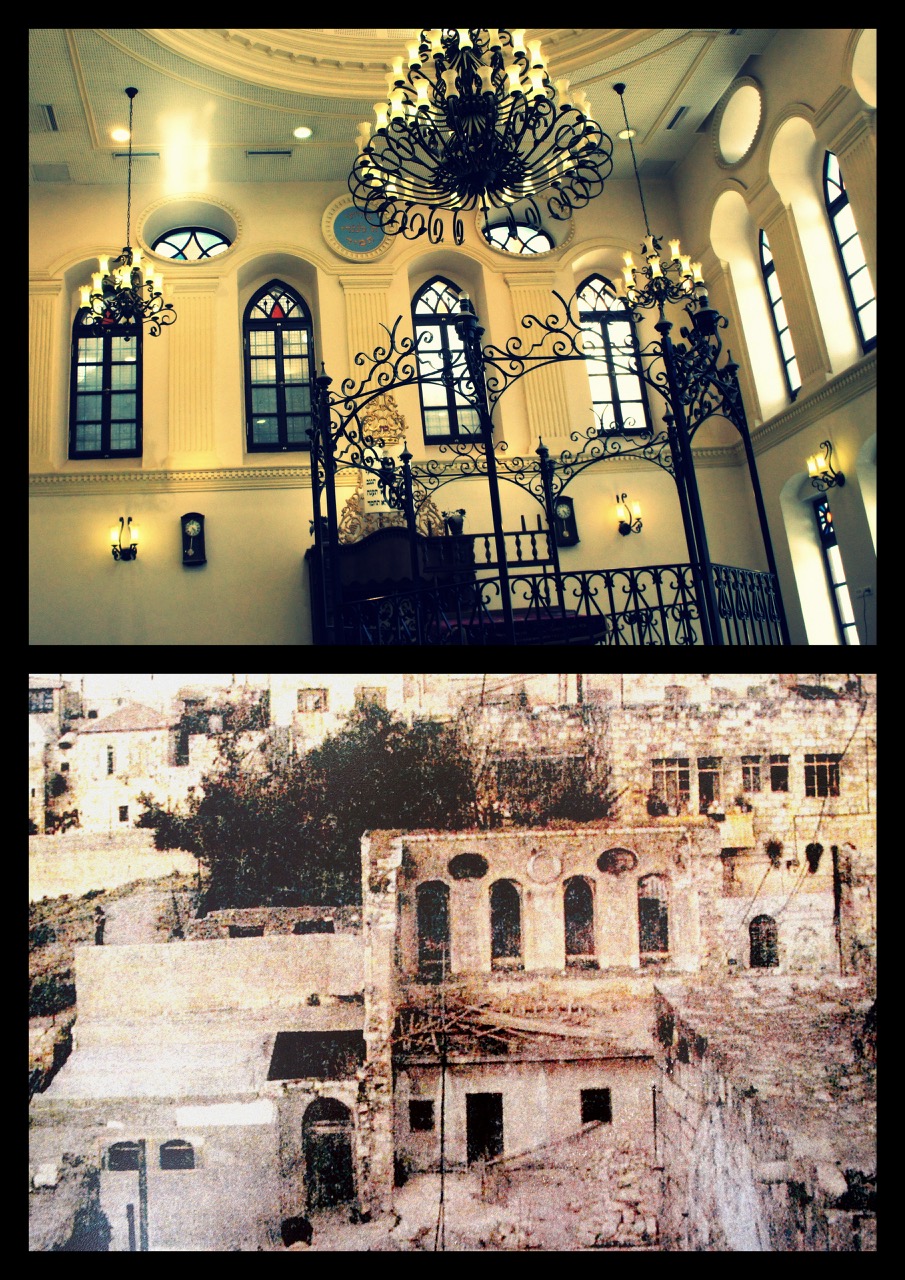 Inna Rogatchi (C). Ohel Yakov reborn. Fine art collage. 70 x 50 cm. 2014.
Inna Rogatchi (C). Ohel Yakov reborn. Fine art collage. 70 x 50 cm. 2014.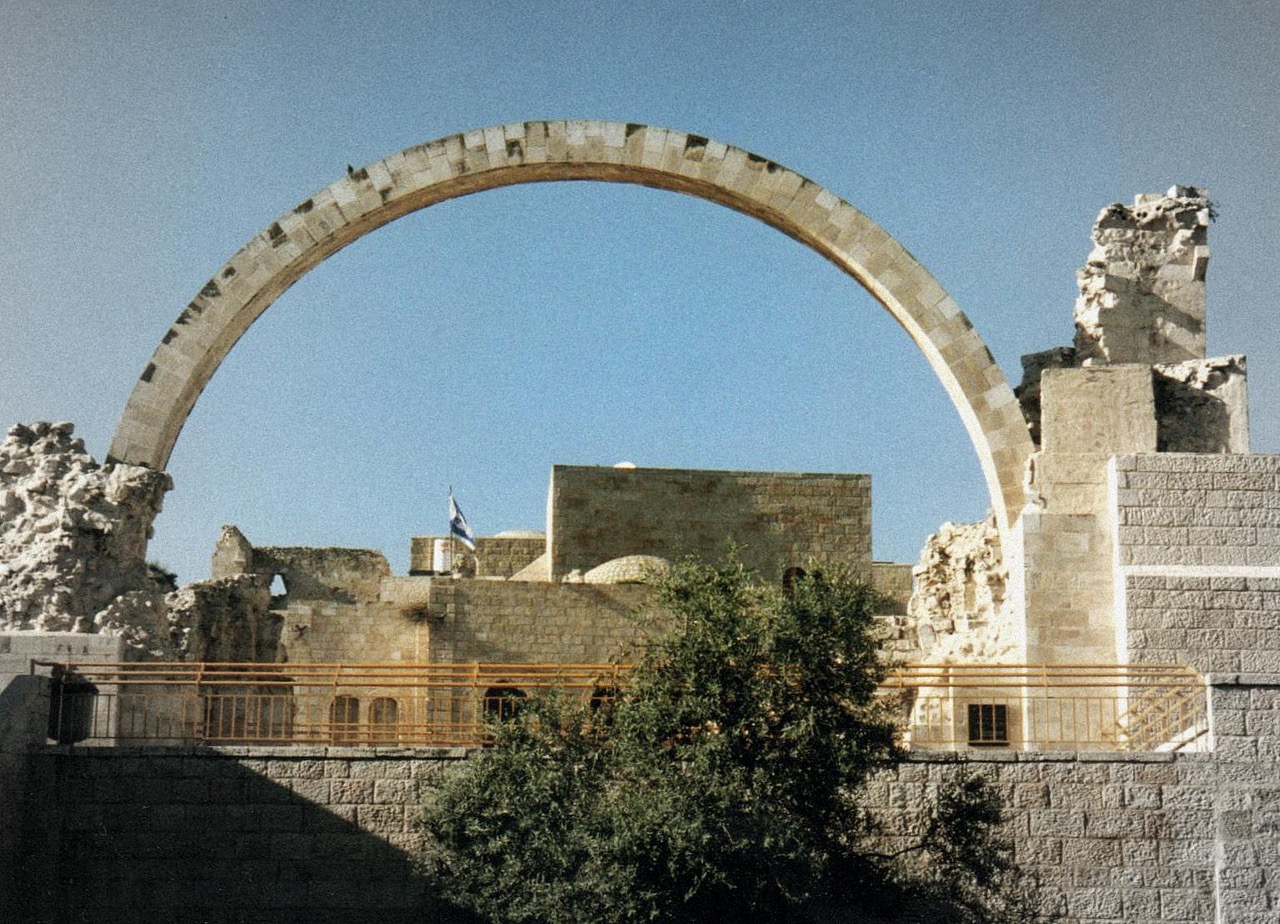 Inna Rogatchi (C). Hurva Reminisce. Fine art photography. Limited edition. 1993-2013.
Inna Rogatchi (C). Hurva Reminisce. Fine art photography. Limited edition. 1993-2013.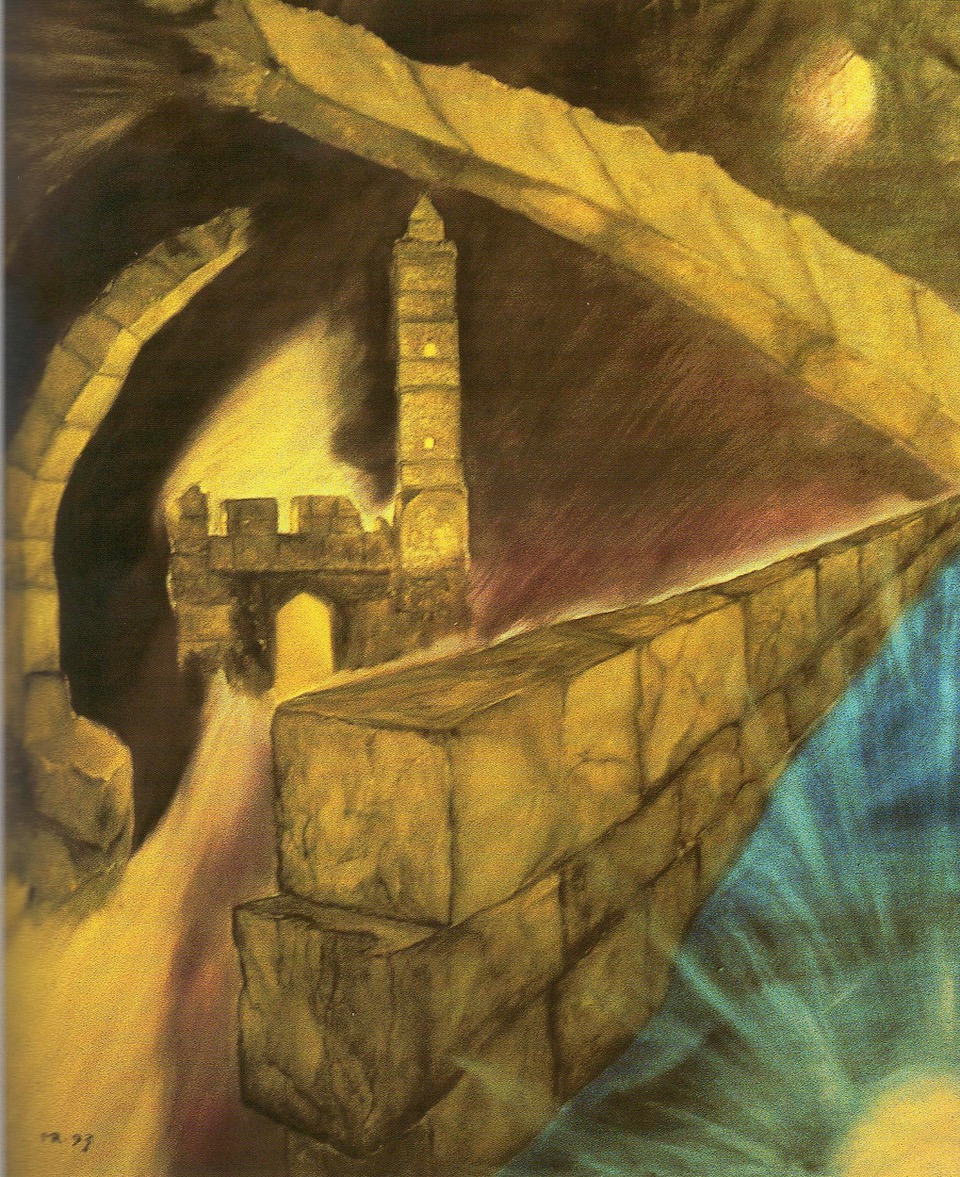 Michael Rogatchi (C). My Stones. Jerusalem. Oil on canvas. 110 x 90 cm. 1993. Permanent Art Collection, the Municipality of Jerusalem.
Michael Rogatchi (C). My Stones. Jerusalem. Oil on canvas. 110 x 90 cm. 1993. Permanent Art Collection, the Municipality of Jerusalem. Inna & Michael Rogatchi (C). Hurva Return. Fine art collage on canvas. Unique. 2013. Permanent Art Collection, the Chief Rabbi of Dnepr, Ukraine.
Inna & Michael Rogatchi (C). Hurva Return. Fine art collage on canvas. Unique. 2013. Permanent Art Collection, the Chief Rabbi of Dnepr, Ukraine. Michael Rogatchi (C). My Yerushalaim. Exclusive art poster. 100 x 80 cm. 2021.
Michael Rogatchi (C). My Yerushalaim. Exclusive art poster. 100 x 80 cm. 2021.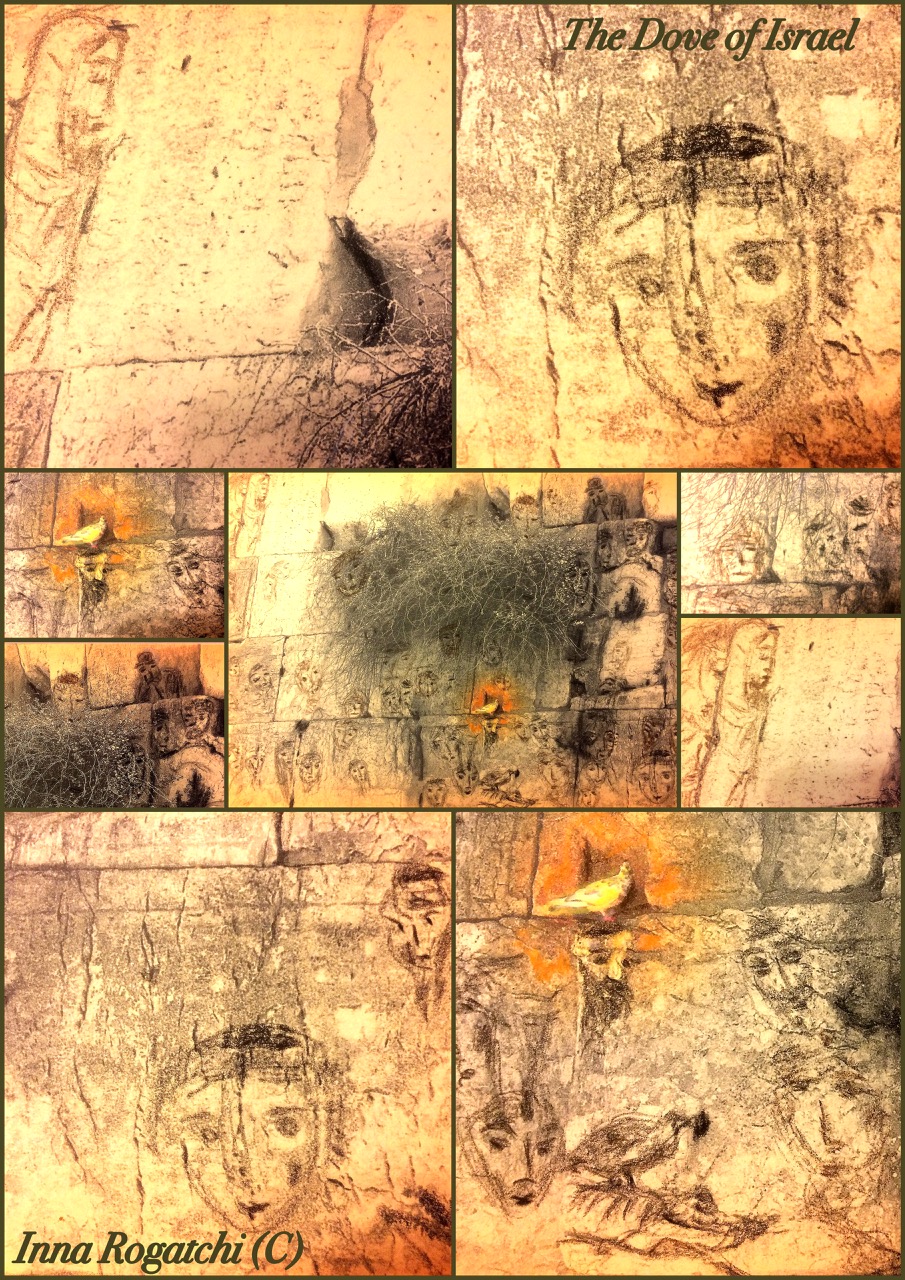 Inna Rogatchi (C). The Dove of Israel. Exclusive art poster. 70 x 50 cm. 2021.
Inna Rogatchi (C). The Dove of Israel. Exclusive art poster. 70 x 50 cm. 2021.


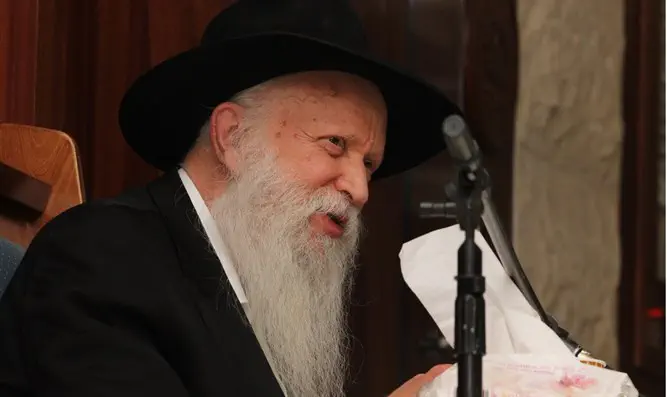
 Cover The Inner DimensionDr. Rogatchi
Cover The Inner DimensionDr. Rogatchi
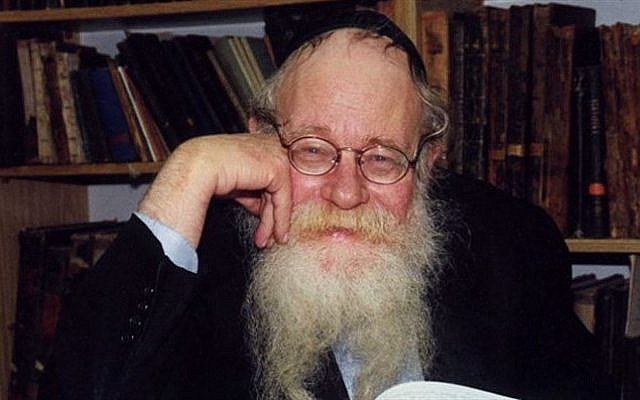 Rav Adin Even-Israel Steinsaltz. Courtesy: Steinsaltz Centre.
Rav Adin Even-Israel Steinsaltz. Courtesy: Steinsaltz Centre.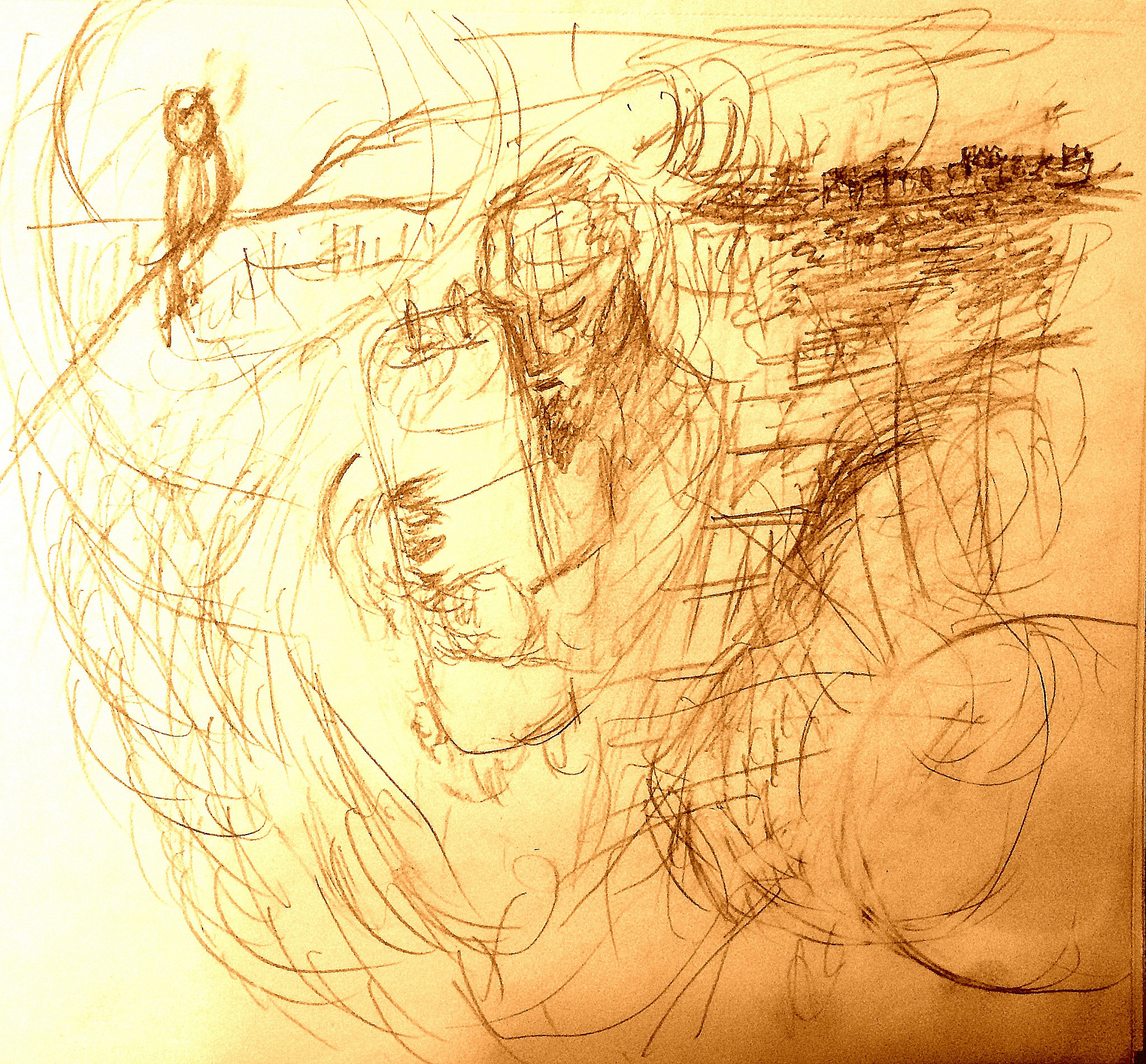 Michael Rogatchi (C). Eretz Israel. Journey in Time. Pen on cotton paper. 40 x 50 cm. 2016. Homage to Rav Adin Steinsaltz.
Michael Rogatchi (C). Eretz Israel. Journey in Time. Pen on cotton paper. 40 x 50 cm. 2016. Homage to Rav Adin Steinsaltz.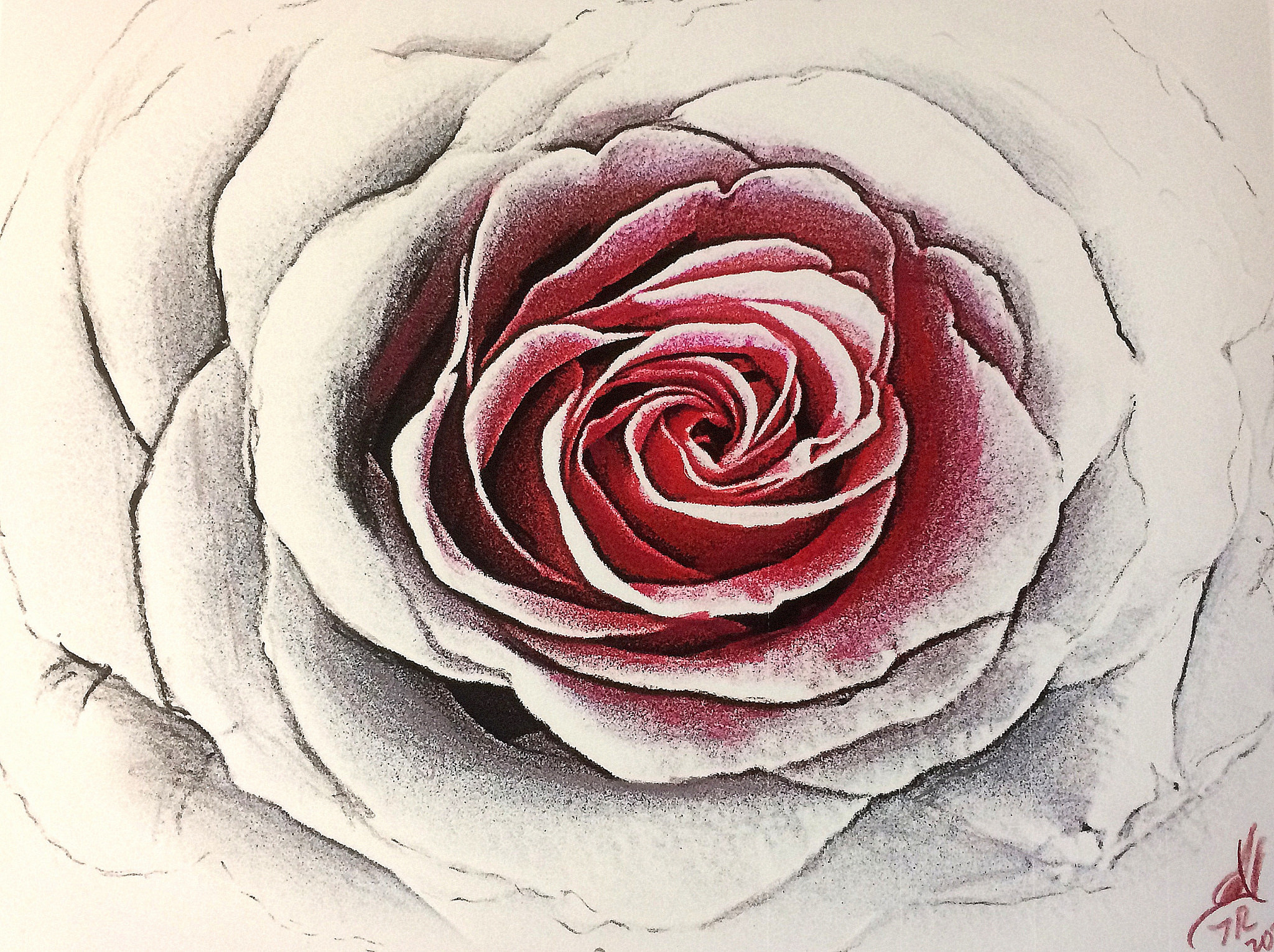 Inna Rogatchi (C). The Thirteen Petalled Rose. Homage to Rav Adin Steinsaltz. The Garment of the Moon series. Lapice pastel, crayons Luminance on authored original archival print on white cotton paper. 30 x 40 cm. 2020.
Inna Rogatchi (C). The Thirteen Petalled Rose. Homage to Rav Adin Steinsaltz. The Garment of the Moon series. Lapice pastel, crayons Luminance on authored original archival print on white cotton paper. 30 x 40 cm. 2020.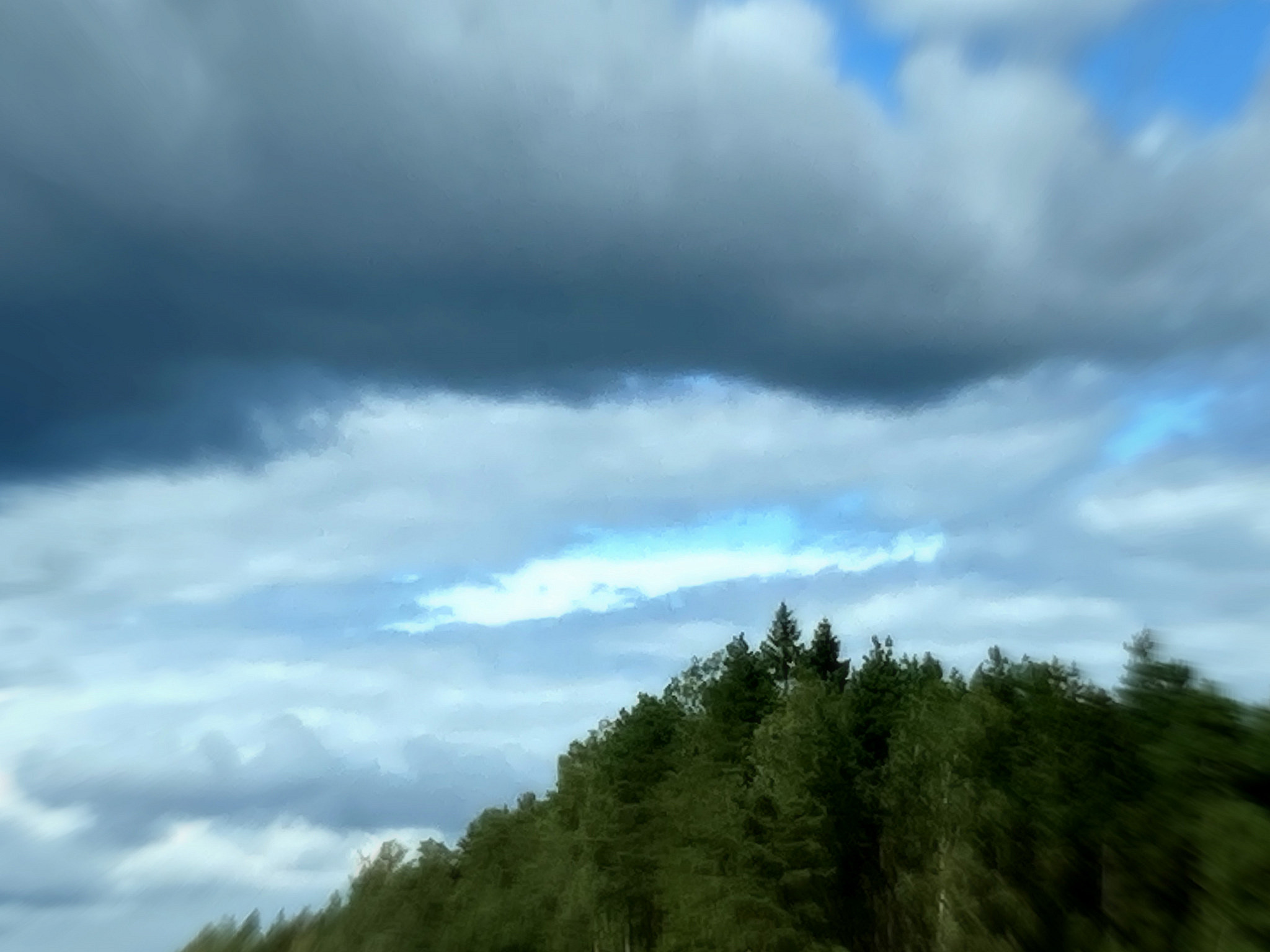 Inna Rogatchi (C). Clouded View. Watercolour, crayons Luminance on authored original archival print on cotton paper. 30 x 40 cm. 2020.
Inna Rogatchi (C). Clouded View. Watercolour, crayons Luminance on authored original archival print on cotton paper. 30 x 40 cm. 2020.
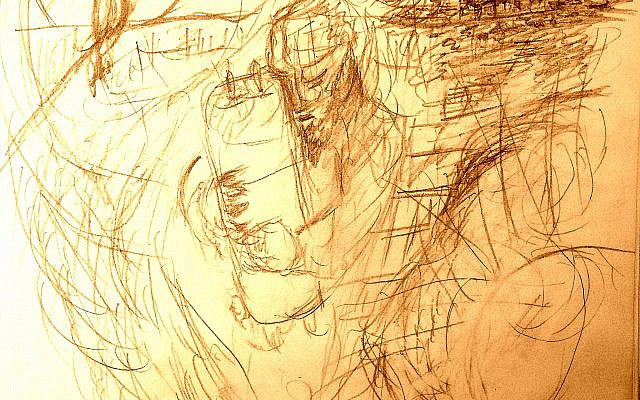 Michael Rogatchi (C). Eretz Israel. Journey in Time I. Pencil on white cotton paper. 30 x 40 cm. 2016. The Rogatchi Art collection.
Michael Rogatchi (C). Eretz Israel. Journey in Time I. Pencil on white cotton paper. 30 x 40 cm. 2016. The Rogatchi Art collection.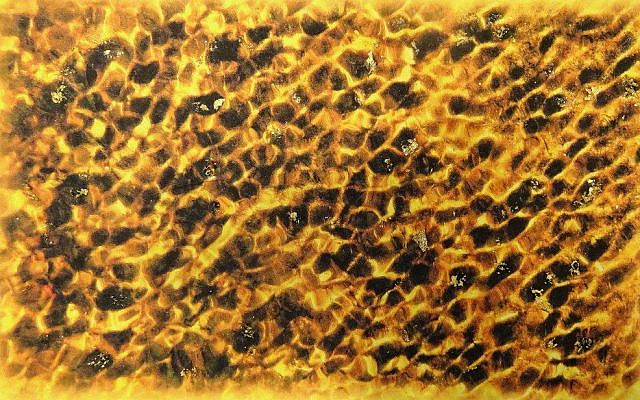 Inna Rogatchi (C). The Light of the Torah I. The Light of the First Day project. Watercolour, crayons a encre, oil pastel, hand-applied gold leaf on authored original archival print on cotton paper. 30 x 40 cm. 2018-2019. Private collection, Israel.
Inna Rogatchi (C). The Light of the Torah I. The Light of the First Day project. Watercolour, crayons a encre, oil pastel, hand-applied gold leaf on authored original archival print on cotton paper. 30 x 40 cm. 2018-2019. Private collection, Israel.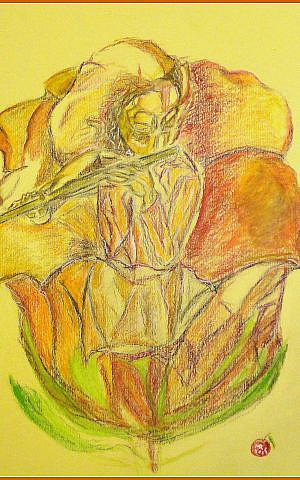 Michael Rogatchi (C). Shavuot Rose. Indian ink, oil pastel on yellow Italian hand-made cotton paper. 50 x 35 cm. 2015.
Michael Rogatchi (C). Shavuot Rose. Indian ink, oil pastel on yellow Italian hand-made cotton paper. 50 x 35 cm. 2015.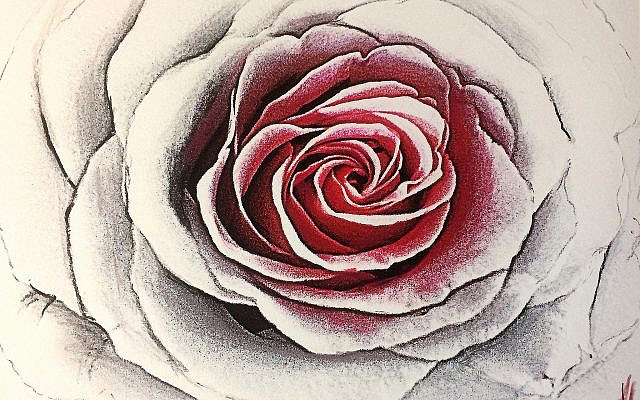 Inna Rogatchi (C). The Thirteen Petalled Rose. The Garment of the Moon series. Lapice pastel, crayons Luminance on authored original archival print on white cotton paper. 30 x 40 cm. 2020.
Inna Rogatchi (C). The Thirteen Petalled Rose. The Garment of the Moon series. Lapice pastel, crayons Luminance on authored original archival print on white cotton paper. 30 x 40 cm. 2020.